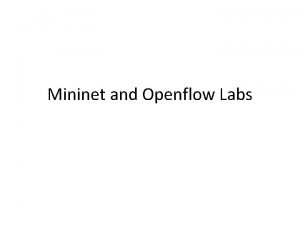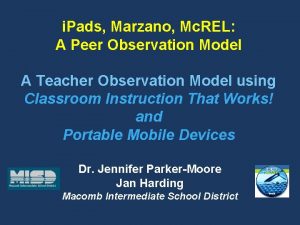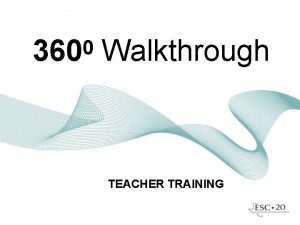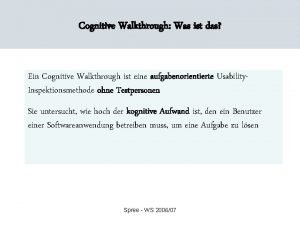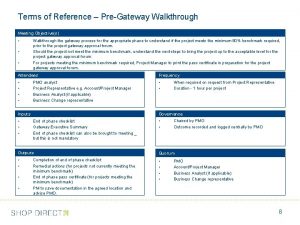CSI Module Four Final WalkThrough A final walkthrough









- Slides: 9

CSI Module Four

Final Walk-Through A final walk-through is initiated when the investigation begins to come to a close Final walk-through is to make certain that all conditions have been documented, all evidence collected or processed, and all tools/materials that were utilized during the investigation retrieved. An investigator, typically the same who conducted the initial walk-through, will take one visual inspection around the crime scene to make sure all evidence has been collected and/or processed at the scene.

Final Walk-Through The final walk-through serves the purpose of taking a final look around for any evidence that may have been passed over or unintentionally neglected. In the event that an item of evidence is located that has not received documentation or processing, that item must be properly documented/collected/processed prior to subsequent actions or release of the scene. In the event that an item of evidence was overlooked, it is not always possible to return to the scene at a later time expecting that piece of evidence to remain at the scene.

Final Documentation After the investigation team has debriefed, it is important to further document the final conditions of the crime scene. Photographs are taken to portray the final condition of the scene. The photos serve as a supplement to the evidence log by showing what items from the scene have been collected and/or processed as evidence.

Final Documentation of any excluded item is accomplished not only by photography, but by adding it to the sketches, measurements, and evidence log, as well as creating its own chain of custody. These actions are documented before the crime scene is released to the appropriate authorities.

Clean-up Prior to any final documentation of the crime scene it is necessary to clean up, or remove, any items that were introduced into the crime scene to aid in the investigation. This can include, but is not limited to: Fingerprint brushes Paper Instruments Fingerprint powder String Box Cutters Tape Scales/rulers Swabs Ladder Used gloves & booties Dowel Rods Paper towels Casting materials Digging implements Trash bags Crime Scene Kits

Clean-up As often as we try to prevent a mess, it inevitably seems that one is created. It is important to leave a crime scene in the original condition; or as close to original as possible. The effort to remain clean and tidy should not restrict an investigation.

Clean-up If an investigator needs to apply fingerprint powder to an entire sliding glass door to enhance a latent fingerprint, by all means, do so. If a section of the wall needs to be removed to recover a projectile, remove it. If you have to dig up a victim’s marigolds to better photograph a footwear impression in the dirt, dig away. That latent print, projectile, or impression may provide evidence that is vital to the ongoing investigation.

CSI Module Four



